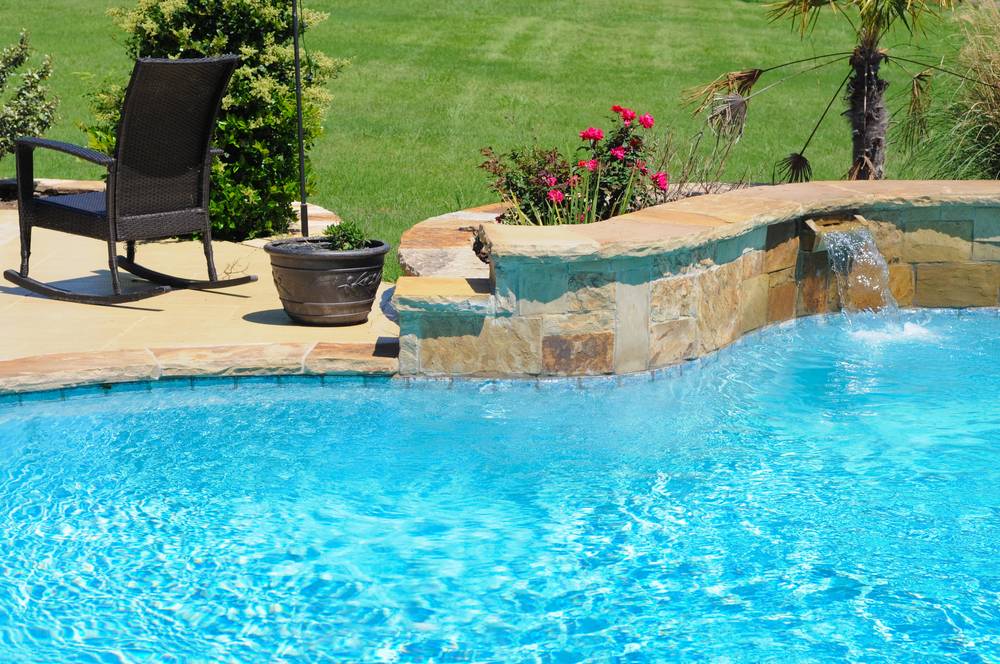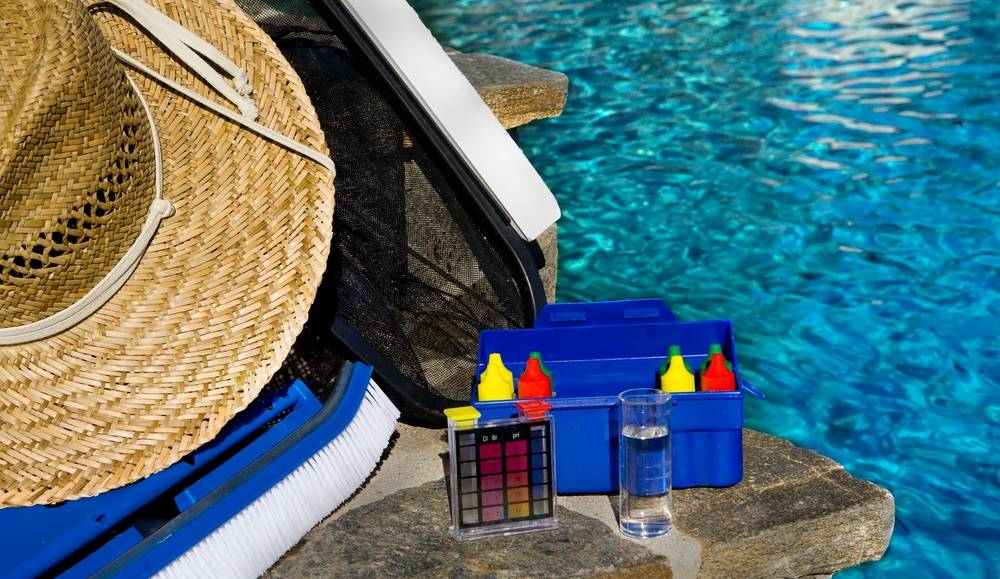Funny thing is the HTH instructions say it turns from green to red, but it turned from blue to yellow. It transitioned decisively but I'm betting just exposing the chems to oxygen (by opening them) will hasten their demise...
TA indicators that turn from green to red (like the Taylor R-0008) are a mixture of bromocresol green and methyl red:

Bromocresol green is sometimes used alone in some TA test kits, but in this case the titration endpoint at pH 4.5 is in the middle of the colour transition, where it's kind of colour-less / greenish.
With the mixture, the endpoint is where it's fully turned red, which I find easier and more reproducible.
One thing that can happen is that the indicator gets bleached out by chlorine. That's why the R-0007 (Thiosulfate) is required to neutralize the chlorine first. When that bleaching happens with the Taylor test, it usually leads to a colour transition from green to yellow, and can be mitigated by adding another drop of R-0007 before adding the R-0008.
If the colour changes from blue to yellow, this sounds more like the methyl red component of the indicator has degraded over time - sounds like it's from the 1990's or early 2000's. I wouldn't use it anymore.
At least my readings on CSI told me CA reacts to muriatic acid. I'm guessing boric acid does not?
Not quite sure what you mean with "CA reacts to muriatic acid"?
Muriatic acid reduces pH and TA, both effects result in reducing the CSI.
Boric acid is a weak acid and has only little effect on pH and TA. It is not suitable for pH or TA adjustments, it is used to add borates to the water as a secondary buffer system.
That Taylor kit also has acid demand drops, one drop made my ph reading go from 7.6 to 7.2, another drop had no effect. Instructions say look at documentation that isn't there. I reckon that's useful if I ever want to referee a reading of 8.0 to see if it's higher. If 8.0 a drop should read 7.6, yes?
It's not as easy. To start with, the pH scale is logarithmic, adding the acid demand drops at a higher pH will result in a different pH change compared to adding the same amount of drops at a lower pH. And the pH change depends on the current TA. Would your TA have been for example 100 instead of 60, then the pH change by one drop of acid demand reagent would have been smaller.
The acid demand test used to useful before easy to use calculator apps like PoolMath were available to work out how much muriatic acid to add to the pool. By knowing the volumes of pool and test sample, and the strengths of your muriatic acid and the acid demand reagent, you can scale the number of drops required for a certain pH change in your test sample to an amount of acid to be added to the pool to achieve the same pH change in the pool.
When starting above the pH-indicator max, it's not easy to calculate the starting pH from the number of drops that were required to get pH down to let's say 7.6. The granularity of the drops and the uncertainties in the TA test and the pH reading just add to much error. And you needed a tool to calculate pH changes with good accuracy - PoolMath is not good enough for that, particularly above pH 7.8.
But even if you didn't know the starting pH because it was "too red", it can be used to scale this number of drops (using the table that comes with the test, e.g. in the Taylor booklet) to a volume of muriatic acid that will reduce the pool's pH to 7.6.
But rather than using the acid demand test, I would recommend to take it in stages and keep adding smaller doses of muriatic acid until you get to a readable pH, and then make the final adjustment using PoolMath.
My personal opinion is, that the acid demand test (end even more so the base demand test) has become quite redundant with PoolMath. But it can be useful to play around with to get used to the full colour spectrum of the pH indicator under your particular test conditions (lighting, background colours, eye conditions, etc).


 . Sorry for the confusion.
. Sorry for the confusion.



